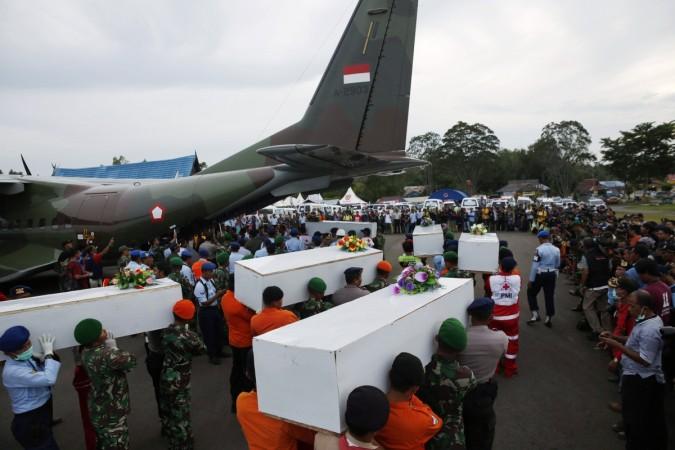
A week since the disappearance of AirAsia Flight QZ8501 from the radar of air traffic control, it has been determined that weather was a "triggering factor" in its crash. For the search mission for missing bodies and wreckage on the 8th day, 89 divers, including those from Russia have been employed.
Around 7:21am (IST) the first body of Sunday and the 31st one since the first search party has been recovered, reported Channel News Asia. It is still unknown if the body was that of a male or female. Around 11am (IST), Indonesia search and rescue teams chief Fransiskus Bambang Soelistyo had also confirmed that a fifth debris of the flight was discovered on the seabed, reports Reuters.
Singapore's Minister for Defence, Dr Ng Eng Hen, had posted around 7am (IST) on his official Facebook page that that RSS Valour, which had extended assistance during the search for AirAsia Flight QZ8501 wreckage was on its way back to Singapore.
"Well done boys for the good work done. I hope that you will be able to spend some time with your families as you were away during the New Year holidays," he posted, along with a short clip of the sea conditions taken from RSS Valour during the search operation.
Bambang Sulstyo, head of Indonesia's search and rescue agency had revealed at a press conference held in Jakarta early in the morning that they are expecting the waves of Java Sea to rise to height of 1.5 to 2 metres.
Search teams have already found four large pieces of the remains that are believed to be parts of the Airbus A320-200, from the priority search area in the Java Sea. However, bad weather conditions, including 15-foot-high waves and strong underwater currents, had prevented divers from conducting searches on Saturday.
QZ8501, which took off early on 28 December from Surabaya, for Singapore, had disappeared from air traffic control's radar a few minutes after the pilot sought permission to turn left and climb to avoid bad weather 35 minutes into the flight. Icing is likely to have caused damage to the flight's engine, Indonesia's meteorological agency announced on Sunday.
According to an initial report from BMKG (Badan Meteorologi, Klimatologi dan Geofisika), the aircraft may have flown into the storm clouds owing to erratic weather during the time.
"The most probable weather phenomenon was icing which can cause engine damage due to a cooling process. This is just one of the possibilities that occurred based on the analysis of existing meteorological data," the report said.
More details in understanding the AirAsia crash has been published under "KECELAKAAN AIRASIA QZ 8501 ANALISIS METEOROLOGIS".
With Sunday's search mission, it is expected that more bodies would be discovered, along with the crucial "black box" recorders.









